Bernhardt Muller is considered one of the first American architects to take a work of literature and craft it into a building. He is best known for what is called storybook architecture and some of his greatest works can be found in his hometown of Short Hills.
This evening, Thomas Baio, an architect living in a Muller-designed home at 1 Nottingham Road, will open the doors to the Robin Hood Cottage, which has proven somewhat controversial in the preservation world.
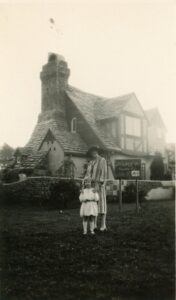
A 1926 photo of the Robin Hood Cottage. Photo Courtesy of the Millburn-Short Hills Historical Society
When the home was built in 1925, it was considered a reproduction of an actual thatched-roof cottage in Nottingham. The slate shingles, half-timbered walls, and high-pitched roof recalled the homes of the English countryside near Robin Hood’s fabled hideout in Sherwood Forest.
A number of Muller’s homes in Short Hills have landmark designation, however, Baio’s home sits just outside the borders of the nearest historic district, which is a sore point for many local preservationists.
In 2023, Millburn’s Historic Preservation Commission commissioned a study to designate the first new historic district since Short Hills Park listed on the National Register in 1980. It was to be called, rather whimsically, Merrywood Nottingham.
“Through history, it’s always been at the top of our list to designate,” said Alison Canfield, HPC chair. “This is one of the first planned neighborhoods in the state.”
The 35-acre tract planned community was called Nottingham and the 2023 architecture study even included a sales pamphlet from the 1920s. Baio’s home was central to that neighborhood as it served as the sales office for Nottingham’s builder Donald Leavens.
However, residents fought vehemently against the efforts to landmark Merrywood Nottingham. “I tabled all the designations for a later date,” Canfield said. “What we recognized is that a lot of education needs to happen.”
The same year as the study, Baio bought the home on Nottingham Road for $750,000. But after sitting empty for six years, it badly needed work. The lack of landmark designation gave Baio more liberty to renovate the property.
Baio considers himself a preservationist, but he isn’t a purist. Typically, the owner of a landmarked property is forbidden to alter any part of the home visible from the street and is required to use traditional materials, Canfield said. “We often say, ‘If someone came back from the early 1900s, would they recognize the home,’” she said.
But Baio, the former president of the Millburn-Short Historical Society, believes that preservation and modernity can coexist. The $1.4 million renovations, which included a dragon-scale-inspired zinc roof and large picture windows, reflect that philosophy.
“You can take a historic element, preserve it, and juxtapose it against modernity,” Baio said. “In Europe, they constantly put glass right up against the traditional stonework and they show the contrast between old and new in such a beautiful way.”
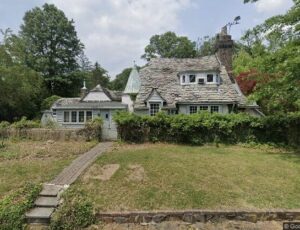
The Robin Hood Cottage as it appears before the renovation.
Canfield admits that had the home been landmarked, Baio would have been more restricted. “When Tom was redoing this house, a lot of people were upset — the same people who didn’t want the designation to happen,” she said. “But he took a difficult property and brought it back to life, so we’re grateful for that.”
In Howard Pyles’s The Merry Adventures of Robin Hood published in 1883, the protagonist would flee the unjust authorities into the Sherwood Forest outside Nottingham. The Robin Hood Cottage became a real-life refuge for Baio. He left Mendham with his wife, Monica, after a political ordeal that got national attention, largely because it involved one of Mendham’s most famous residents — former Governor Chris Christie.
In 2022, Baio, hoping to regain his seat on the Township Committee, alleged that illegal mail-in ballots had thrown off the true count. Two of those ballots belonged to Christie’s children.
Baio ended up dropping the lawsuit, but he still takes pride in the story as if he had stood up to his own version of the Sheriff of Nottingham. “I had a knee on my neck,” Baio said. “I told my wife, ‘We’ve got to get out of Mendham.’”
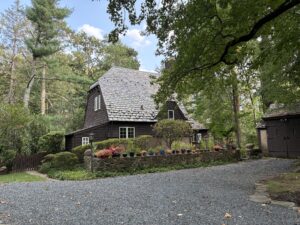
Bernhardt Muller’s former home at 2 Woodcrest Avenue. Image courtesy of Darren Tobia.
Along the way, Baio has become a champion of Muller, who left behind some of his best designs in Short Hills, including the cottage where Muller lived with his wife called the Elf House at nearby 2 Woodcrest Avenue and the Stone House at the Cora Hartshorn Arboretum. Baio can rattle off every resident who ever lived in his home.
Muller’s other best-known example of storybook architecture is called Opa-Locka, a development near Miami that originally comprised dozens of buildings with Moorish details taken straight from the pages of Arabian Nights. The 20 that remain are listed on the National Register.
While Muller is the original “author” of the Robin Hood Cottage, Baio believes he merely penned a new chapter. “It’s an important final chapter in the narrative,” he said.
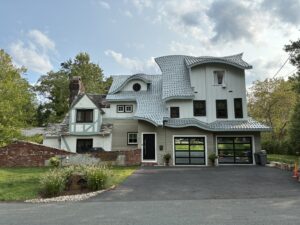
The Robin Hood Cottage after being renovated.
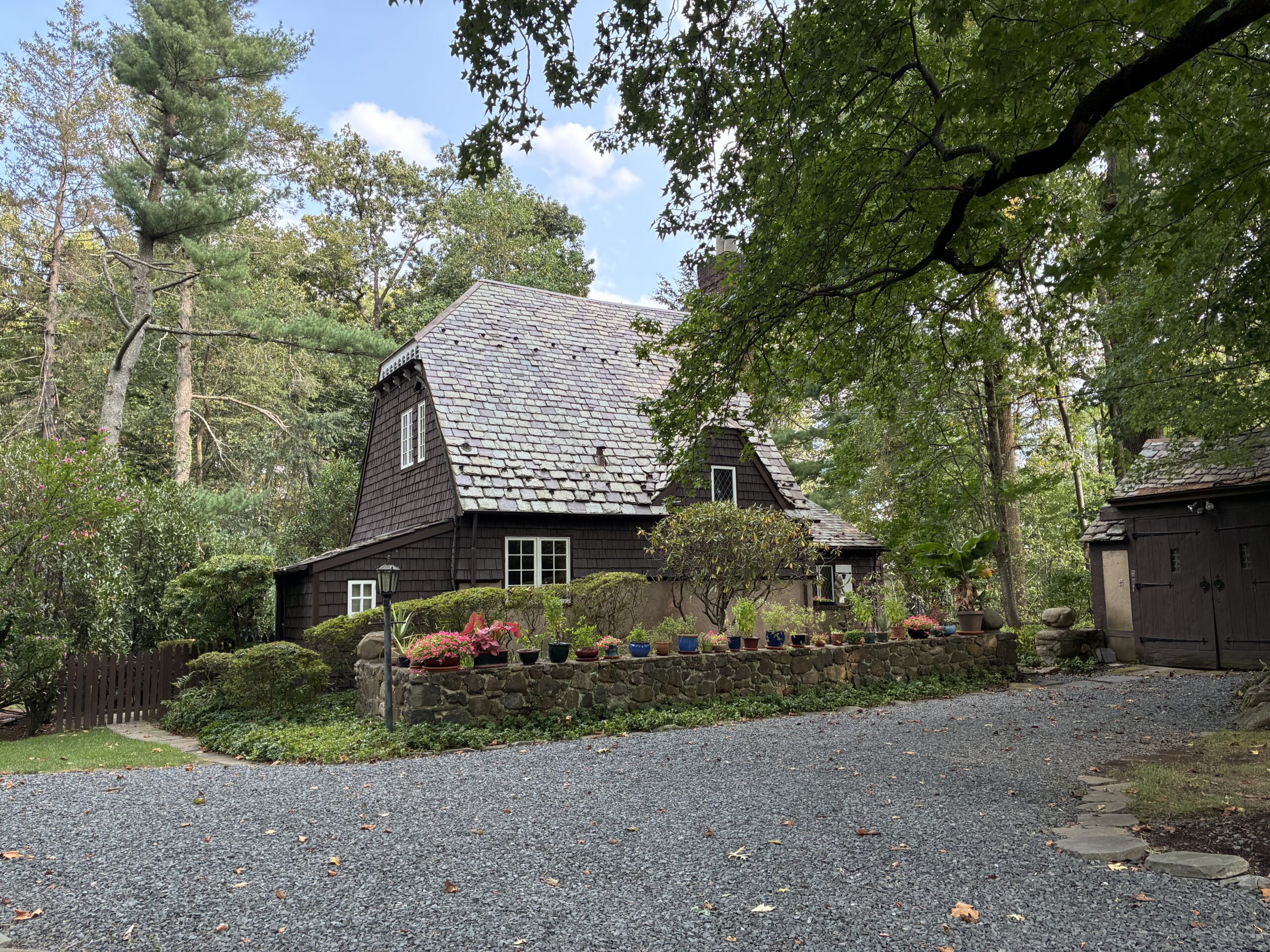
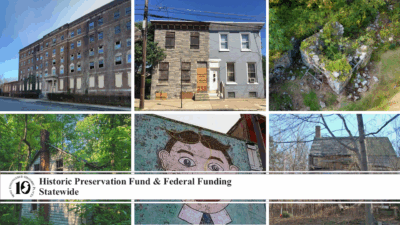

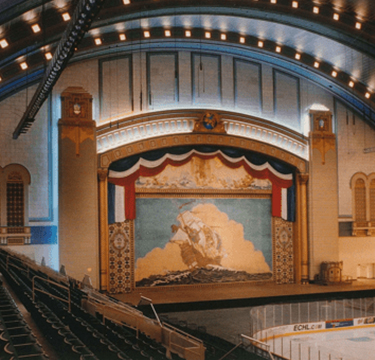
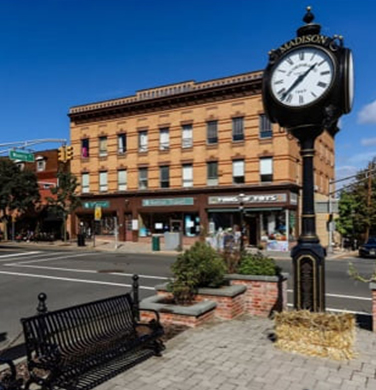

Ken
| 15 September 2025It’s disheartening to see history being disrespected by someone who claims to “like” it. The renovations destroy the character of the home making it into a clown house and an insult to architecture. I hope people can learn about the importance of a historic district and prevent rabid people like this from imposing their own interpretation on history. It would be better to allow the house to die with dignity and be demolished than allow it to be drastically changed to an architectural mess. Shame on Thomas Baio! I am so happy he is not my neighbor.
Thomas Baio
| 7 December 2025I appreciate the critique. I invite you to come visit my house. My cell # is 732-261-6915.
I love historic preservation and have spent the better part of my architectural career advocating for adaptive reuse. Who else would do what I did. I preserved the original structure and historically cleaned my slate and replaced it. I also preserved single pane leaded glass without making them insulted glass and sleep each night in the room. I protected this gem and don’t deserve the negative comments. I am willing to state my case to you in person Ken. Get to know me better. Sorry it has taken me 3 months to respond.
Alex Bergmann
| 20 September 2025I have tremendous respect for Tom Baio and his skill and impeccable character. My wife and I have worked with him for over fifteen years as clients.
While not every decision he has made in constructing or renovating the various homes in Short Hills in which he has lived over the many years he has been here appeals to everyone — I am a traditionalist and he has more modern tastes, for example —, what he does is informed by decades of experience and broad and continuing education about construction methods, possibilities, and styles. And he has tremendous interest in architectural history broadly speaking including not only the buildings and construction methods but also historical and other architects, as well as general history where he works and lives – he was the president of the Short Hills historical society for a time, for example.
I dare say someday people will look back on his legacy the way people now look on Muller’s work.
Tom preserved about half of the existing Robin Hood structure nearly ‘as was’ except for important safety concerns — like the roof of 7” thick slate (can you imagine how crazy that is?) which likely imperiled the whole structure. And then he put his own design into the other half. That’s not to everyone’s taste but it seems a generous compromise to me. I’ve lived in a lovely Edwardian home before, the first in its area to be fitted with running hot and cold water because its doctor owner specialized in medicinal baths. Owners after us plundered it for its gorgeous marble fixtures — likely for sale on eBay —, cut down its enormous tulip tree, and paved over its huge garden including its six lovely fruit trees — so I viscerally understand the feelings of those who think something of historical beauty has been violated.
That said, not EVERYTHING of historical interest needs to be preserved. It’s debatable whether the Robin Hood was among Muller’s best work. And the Township’s strong response against extending the historic district might instead suggest that it’s the initiative’s authors who need more ‘education’.
I’ve just rebuilt my entire home under Tom’s design and his careful supervision, but some of the Township’s code restrictions REALLY rankled. As the owner, I should, barring safety regulations, have wide, almost complete freedom to build as I like — and so should Tom or anyone else, regardless of onlookers’ personal tastes — or worse, the taste of regulation setters from over a decade (sometimes decades) ago.
The issue with critics is that it’s most often not their place to comment, they’re frequently uneducated (ha!), and they’re regularly mean spirited rather than respectful or sources of constructive criticism.
I’ll refrain from commenting on Tom’s work on the Robin Hood house because I have nothing constructive to offer and my opinion on its updated style, good or bad, doesn’t matter. But ask me about his work on my house and I’ll praise him to the moon!
Susan Byers Paxson
| 14 October 2025Do you mean to say that he has done this type of wreckovation to OTHER houses in this historic district? OMG. I will never understand this drive to take something historic and beautiful and “fix” it, rather than just building the house that you want on a vacant lot. I feel a bit ill.
Thomas Baio
| 7 December 2025I appreciate the critique. I invite you to come visit my house. My cell # is 732-261-6915.
I love historic preservation and have spent the better part of my architectural career advocating for adaptive reuse. Who else would do what I did. I preserved the original structure and historically cleaned my slate and replaced it. I also preserved single pane leaded glass without making them insulted glass and sleep each night in the room. I protected this gem and don’t deserve the negative comments. I am willing to state my case to you in person Susan. Get to know me better. Sorry it has taken me 3 months to respond.
Ignatius Blumenfeld
| 26 September 2025All I can really say is….WHY!!!! Why would anyone take such a unique and beautiful house and “renovate” (really it was wreckovated) it until it no longer looks anything like it once did. The building in the ‘after’ picture even though real, looks very fake. It looks like everything else people build today. Why can’t developers just build their own stuff on flat land instead of remuddling or demolishing these historic structures and removing America’s history.
Is there any way to bring the house out of this modern prison? I hope the next owner (if any) will be able to somewhat lessen the damage.
Thomas Baio
| 7 December 2025I appreciate the critique. I invite you to come visit my house. My cell # is 732-261-6915.
I love historic preservation and have spent the better part of my architectural career advocating for adaptive reuse. Who else would do what I did. I preserved the original structure and historically cleaned my slate and replaced it. I also preserved single pane leaded glass without making them insulted glass and sleep each night in the room. I protected this gem and don’t deserve the negative comments. I am willing to state my case to you in person ignatious. Get to know me better. Sorry it has taken me 3 months to respond.
Gerald Sears
| 26 September 2025WoW ! why didn’t he build that from new instead of making a landmark property unrecognizable?
Scottie
| 14 October 2025This truly brought tears to my eyes. Why is the only question I have. Why not leave to die a dignified death as the lovely home it was or why didn’t you allow someone to love it and fix it up as it should have been or why would you consider this improvement? I just don’t understand